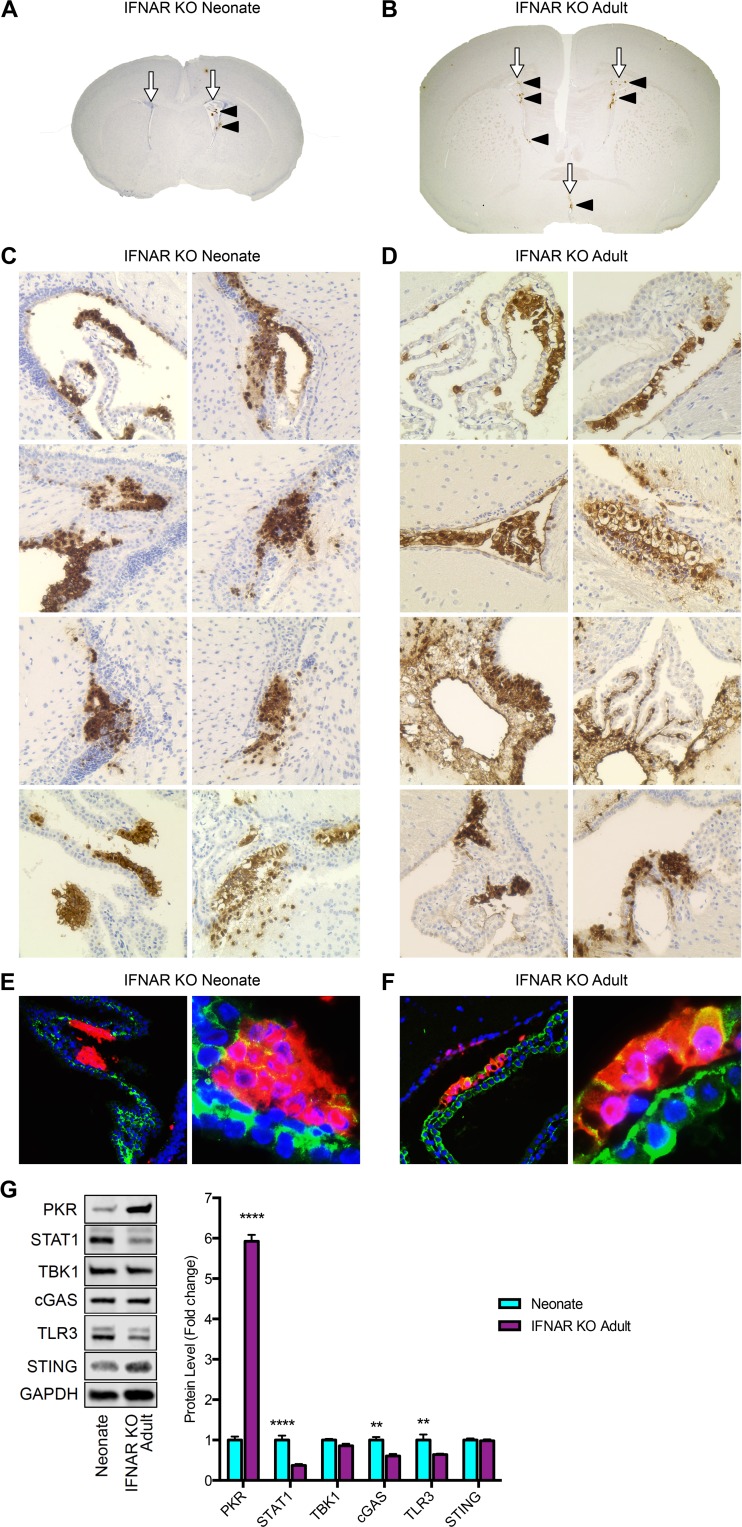FIG 3 .
Genetic ablation of IFNAR restores the early susceptibility of the choroid plexus to HSV infection in the adult. (A) Coronal section of IFNAR KO newborn murine brain (original magnification, ×20) demonstrating the ventricles with CP (white arrows) and HSV-1-positive cells in the CP, stained brown for HSV antigen (black arrowheads). (B) Coronal section of IFNAR KO adult murine brain (original magnification, ×20) demonstrating ventricles with CP (white arrows) and HSV infection of CP (black arrowheads). (C, D) Representative IHC for HSV antigen (original magnification, ×200) of newborn IFNAR KO mice (n = 4) inoculated i.c. with 103 PFU of WT HSV-1 (C) and adult IFNAR KO mice (n = 4) inoculated i.c. with 104 PFU of WT HSV-1 (D) and perfused at 48 h p.i. The CP in IFNAR KO newborns was positive in all infected animals (rows) at different HSV foci in the brain (columns). The adult IFNAR KO CP was robustly positive for HSV in all infected animals. (E, F) Representative IF of IFNAR KO newborn (E) and IFNAR KO adult (F) murine choroid plexus for HSV (red), E-cadherin (green), and DAPI (blue) (original magnifications, ×200 [left] and ×1,000 [right]). IFNAR KO newborn CP and IFNAR KO adult CP both demonstrate colocalization of HSV with E-cadherin (merge, yellow). (G) Representative immunoblots (left) and densitometry results (right) of brain homogenates from uninfected WT newborn and IFNAR KO adult mice (n = 5 in each group). Protein levels of PKR remained significantly lower in the WT newborn brain than in the IFNAR KO adult brain. Basal levels of STAT1, cGAS, and TLR3 remained higher in the newborn brain than in the IFNAR KO adult brain. TBK1 and STING levels were similar in both age groups. *, P < 0.05; **, P < 0.01; ***, P < 0.001; ****, P < 0.001.

